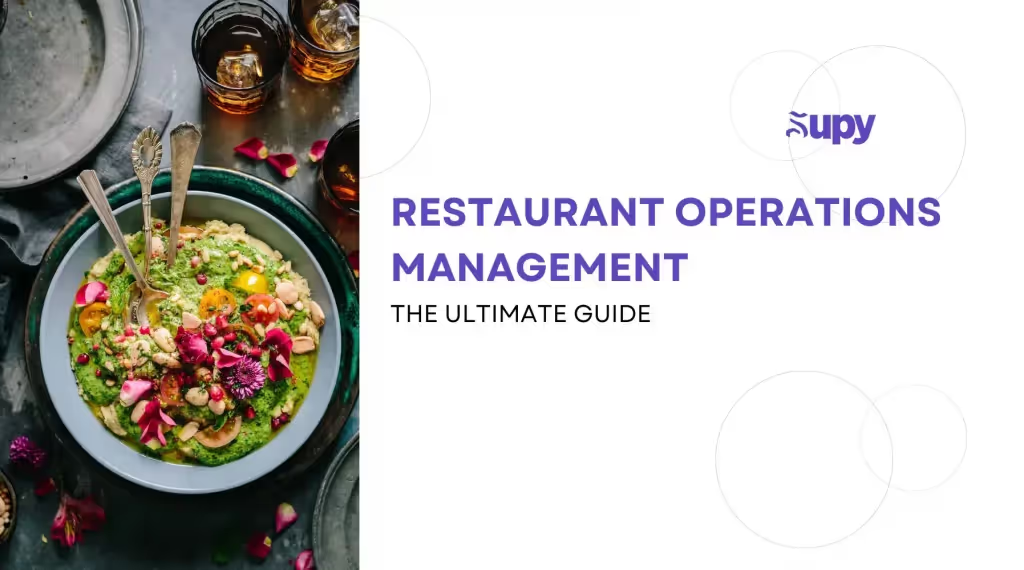10 Tips To Reduce Restaurant Food Waste

Food waste in restaurants, often referred to as wastage, is a global issue, with approximately one-third of all food produced for human consumption worldwide ending up as waste, resulting in large ingredient depletion and environmental harm. Beyond its ecological impact, food waste can hit restaurant profit margins significantly, as money spent on purchasing ingredients, preparing recipes, and stocking food often goes down the drain if not managed correctly, or without having a laser sharp focus on inventory movements.
In this article, we deep dive into the problem of wastage in restaurants, exploring its financial implications for the industry. We also discuss practical strategies that restaurants can employ to mitigate food waste, ultimately fostering sustainability and increasing menu profitability.

- Table of Contents
- 1. What Is Restaurant Food Waste?
- 2. Top 10 Most Common Causes For Restaurant Food Waste
- 3. 10 Tips To Reduce Restaurant Food Waste
- 4. Conclusion
- 5. About Supy
1. What Is Restaurant Food Waste?
Restaurant food waste refers to the leftover ingredients — both food and non food — that could have been sold but were thrown out instead. Often referred to as “wastage” in the kitchen, or in an inventory management system, it can occur at all stages of a restaurant’s operation, including food preparation, cooking, serving, or just sitting idle in your stock room and expiring. It encompasses ingredients that expire, front-of-house staff that drops plates, or just consumers who send menu items or dishes back to the kitchen. This wastage has a significant impact on your cost of goods sold, and on your actual food cost percentage.
Let’s take an example of a restaurant that often over orders ingredients, leading to spoilage and large portions of food being thrown away. This restaurant has a high food waste percentage. As a result its actual food cost percentage will be significantly higher than its theoretical food cost percentage. This wastage has directly impacted its profitability as higher Food Cost, or cost of goods sold, directly reduces the gross profit margin.
On the other hand, another restaurant closely manages its inventory, orders just enough ingredients to meet demand, and efficiently uses ingredients to ensure minimal wastage. This restaurant has a low food waste rate. Its Food Cost remains lower and closer to its theoretical food cost percentage, because it is maximising the use of purchased ingredients. Consequently, it enjoys a healthier gross profit margin, and higher overall profitability.
It’s important to note that wastage does not affect food cost variance if recorded correctly in your inventory management system.
2. Top 10 Most Common Causes For Restaurant Food Waste

1. Excess Inventory
Overstocking or excess inventory in a restaurant's kitchen leads to food wastage because unused ingredients often expire before they can be prepared and served to customers. This surplus in inventory increases the likelihood of ingredients going bad, forcing the restaurant to waste them or dispose of them, thus contributing to your restaurant’s food waste. It is essential to ensure that purchased ingredients are used efficiently before they expire.
View this post on Instagram A post shared by Supy (@supy.io)
2. Improper storage methods
Improper storage practices within a restaurant's kitchen can significantly elevate food wastage. Poor temperature regulation in fridges and freezers can lead to premature spoilage of perishable items, while disorganized stock rooms can cause ingredients to be overlooked, eventually leading to expiration. When ingredients are not appropriately stored and handled, their likelihood of spoiling or becoming unusable before being fired up into dishes significantly increases, resulting in unwarranted wastage. This mishandling of inventory in the restaurant's back-of-house operations contributes to the increase in your restaurant’s food waste.
3. Overproduction
Overproduction in a restaurant's back-of-house kitchen will elevate your food wastage. When a restaurant prepares an excessive quantity of dishes, it often leads to surplus inventory of production items, and, consequently, higher wastage. For instance, consider a restaurant that bakes a large batch of croissants in the morning but fails to sell them all. These unsold croissants contribute to food wastage because they cannot be stored and have to be thrown away (à la poubelle!). In such cases, overproduction results in wastage not only of ingredients used in making the croissants but also of labor, time, and energy put into their preparation.
Spot, Tackle, & Reduce High-Wastage Sources With Supy's Wastage Dashboard
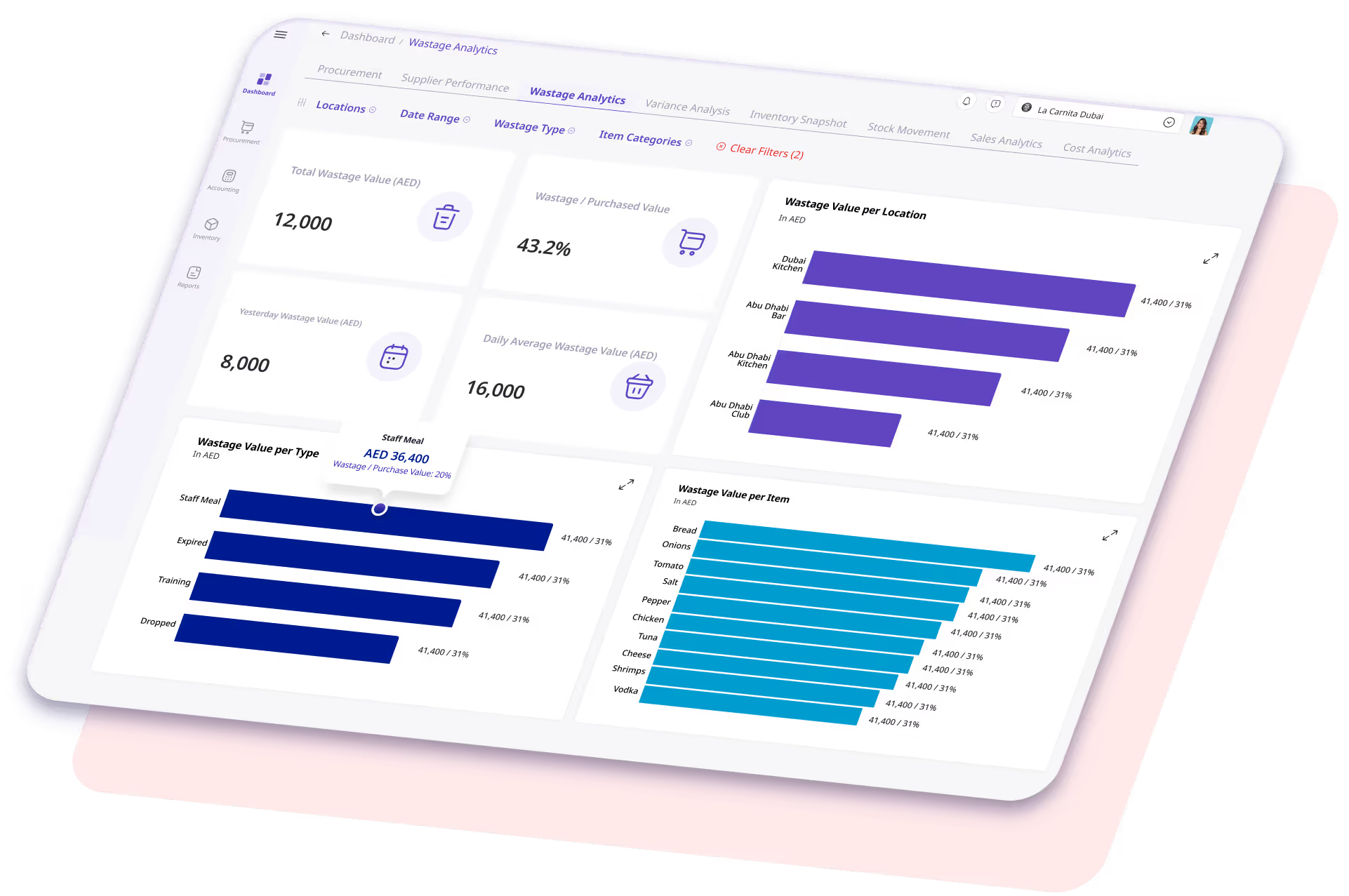
4. Miscalculated portions
Inaccurate or inconsistent kitchen training can result in portions sizes that exceed the intended amount. While customers may appreciate having leftovers to take home, this can lead to increased food wastage. Separately, this will also impact your food cost variance.
5. Lack of data
Inefficient data management and poor inventory management will increase food wastage in a restaurant due to shortcomings in the planning process. Precise data allows back-of-house staff to make informed decisions about ingredient orders, quantities, and usage schedules. Furthermore, lack of data can also spill over into poor menu planning, potentially leading to menus that fail to maximize ingredient usage, thereby increasing wastage.
6. Spillage
Spills are common in restaurants, such as when a server accidentally drops food or a cook knocks things over. These seemingly small accidents lead to increased restaurant wastage. When food spills, it can't be used, leading to wastage of ingredients and contributing to food waste.
7. Incorrect orders
Mistakes happen, even in restaurants, and when incorrect orders get mixed up, it can lead to a fair amount of food waste. If the kitchen makes the wrong dish, it might not get eaten, and that's a waste of both ingredients and the chef's time. When a wrong order is sent back or thrown away, it's increased wastage for the restaurant
8. Refires and reorders
Refires in a restaurant, where a dish is remade because it wasn't prepared correctly the first time, can have a noticeable impact on food wastage. When a dish needs a refire, it means the first one wasn't right, so it often goes uneaten. This leads to more food wastage because the original dish is wasted, and the new one takes extra ingredients and cooking time. It's like making a sandwich with too much mustard; if you have to redo it with less mustard, you've already wasted the extra mustard. In a restaurant, this happens with various dishes, not just sandwiches.
9. Lack of visibility on current wastage
Lack of staff awareness regarding current wastage can have a cascading impact on restaurants. Pinpointing and managing wastage-prone areas becomes challenging, especially when you do not have an effective inventory management system to monitor and track food waste.. This lack of awareness sets in motion a "snowball effect" of negative consequences, leading to increased inefficiencies and wastage.
10. Unforeseen events
Unforeseen events, such as electricity cuts and adverse weather conditions, can significantly disrupt restaurant operations and have a substantial impact on food wastage. Electricity cuts, for example, can compromise refrigeration systems, posing a threat to the freshness and safety of perishable ingredients. In such cases, restaurants may be forced to throw away potentially unsafe food, leading to wastage. Similarly, weather conditions can unpredictably affect restaurants. Extreme weather, such as heavy storms, will deter customers from dining out, leading to lower foot traffic and a potential mismatch between food preparation and demand. Restaurants may prepare excessive amounts of food in anticipation of regular business, only to see it go unsold and become wasted.
3. 10 Tips To Reduce Restaurant Food Waste
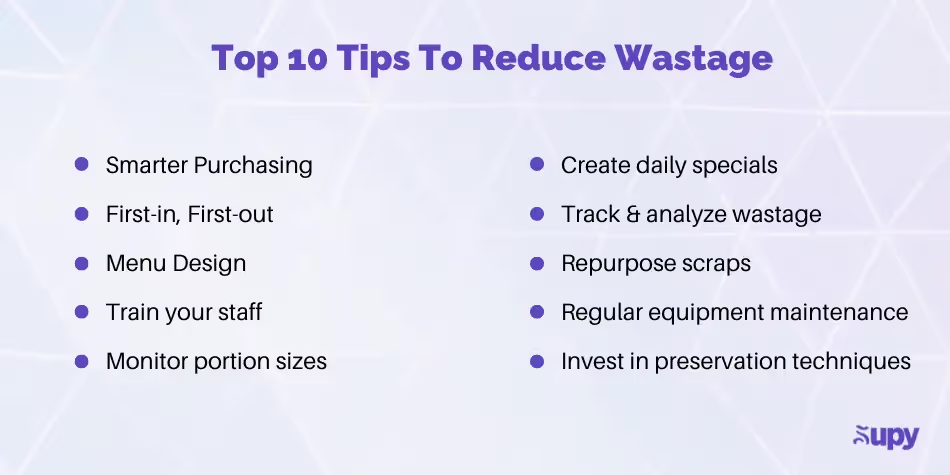
The foundation of back-of-house operation is to “know your inventory”. This means having an accurate and ongoing understanding of every ingredient, product, or item within your restaurant. By knowing your inventory, you can reduce wastage in so many ways:
1. Smarter Purchasing
By consistently monitoring what you have in stock, and tracking past sales, you can make informed decisions when placing orders with your suppliers. Overstocking can lead to ingredients expiring before they're used, especially when it comes to perishable goods. In addition, setting accurate Par Levels and Min Levels for every ingredient in your inventory will guide your staff in making less mistakes when it comes to overstocking. Having an inventory management system that has a user friendly restaurant procurement module will empower your staff to make more informed decisions when it comes to purchasing.
2. First in, First Out (FIFO)
FIFO is a crucial principle for managing ingredients in any restaurant’s back-of-house. It ensures that older stock (those purchased or produced first) is used before newer stock. For instance, if you get a fresh batch of lettuce but still have some left from last week, you'd use the older lettuce first. This way, ingredients are always as fresh as possible, ensuring quality dishes for customers. This method also keeps inventory rotating efficiently, preventing older items from getting lost or forgotten at the back of shelves or in corners of the refrigerator, before they go to waste.
3. Menu Design
A well-crafted menu doesn’t just amuse taste buds but also ensures efficient use of ingredients. By analyzing which dishes are hits or misses, restaurants can optimize their menu to reduce waste. If certain dishes rarely get ordered, they might lead to unused ingredients that expire over time. On the other hand, by designing dishes that use common ingredients, restaurants can make sure that inventory gets used up before it deteriorates. Tweaking the menu periodically based on customer preferences, seasonality, and ingredient availability ensures that food is fresh, costs are managed, and wastage is minimized. It’s a blend of culinary creativity and practical management, all aimed at delivering a delightful dining experience while being resourceful and sustainable.
"Supy’s Menu Engineering helped us understand our business and our customers."
Khalil Kannan - Managing Partner at La Carnita See Menu & Recipes
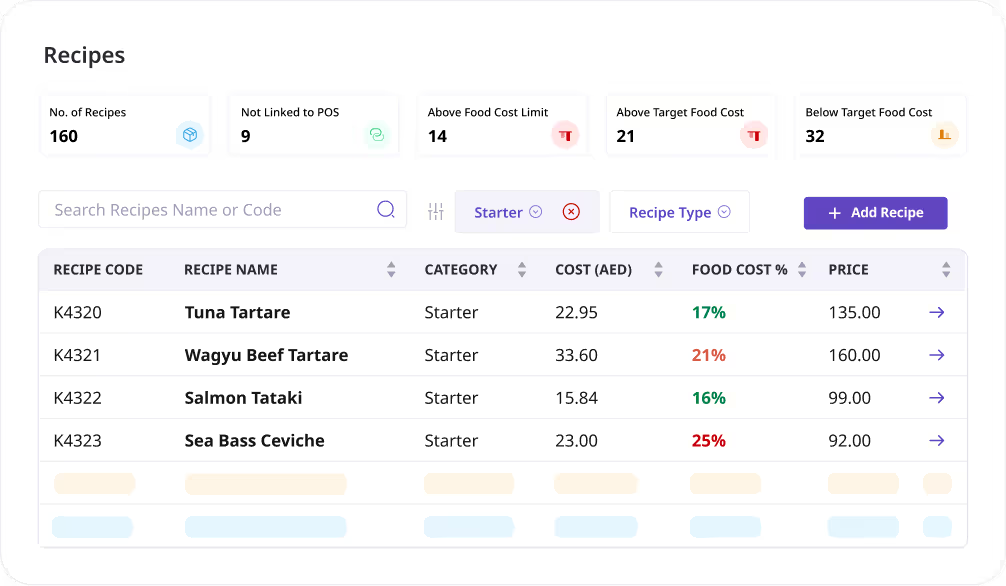
4. Continuously train your staff
Staff are the backbone of any restaurant, and their actions directly impact wastage levels. Proper training ensures they understand the value of every ingredient and the importance of reducing wastage. This includes techniques for portioning dishes correctly, ensuring consistency and avoiding excess. Proper storage practices, like sealing containers, setting fridge temperatures, marinating meats, are vital to extending ingredient shelf life. Training also cultivates a mindset where staff think proactively about waste. For instance, they might suggest dishes to customers based on ingredients that need to be used up. In essence, well-trained staff are not just servers or cooks; they become active participants in a restaurant’s sustainable journey, ensuring resources are used wisely while delivering quality service.
5. Monitor portion sizes
By monitoring and adjusting portion sizes, restaurants can strike a balance between satisfying customers and minimizing waste. Feedback, both from staff and customers, can guide these adjustments. Periodic reviews of portion sizes, in conjunction with waste tracking, can provide insights into what's frequently left uneaten. Advanced recipe management software is key to understand yield or batch size that each recipe created, but also to provide staff with a cookbook and guidelines on how to prepare dishes.
6. Create daily specials
Daily specials are a restaurant's secret weapon to combat waste while spicing up their offerings. By crafting unique dishes based on available ingredients, restaurants can efficiently use excess stock or near to expiry ingredients. For instance, if there's a surplus of chicken, a one-day chicken sando special might be introduced. This approach prevents ingredients from going to waste and offers customers a refreshing variety.
7. Track and analyze wastage in real time
Modern restaurants often use tracking tools or advanced inventory management softwares to monitor food wastage. By documenting what gets wasted, from ingredients in the kitchen to leftovers on diner plates, establishments can spot trends and problematic areas. Data-driven insights enable interventions and planning. Regularly analyzing this data allows restaurants to make real-time adjustments in ordering, preparation, or even menu design. Over time, this continuous feedback loop not only curbs waste but also aids in cost-saving and improving the overall dining experience for customers
8. Repurpose scraps
What seems like waste can often be a hidden treasure. Food scraps, like vegetable peels, ends, or meat trimmings, don’t necessarily need to go in the bin. Chefs can repurpose these into broths, stocks, or even new dishes. For instance, potato skins might be seasoned and baked for a crunchy snack, or vegetable trimmings boiled for a flavorful stock base. By reimagining these “leftovers”, restaurants reduce waste, maximize the utility of every ingredient, and can even introduce delightful and sustainable offerings to their menu. Embracing this approach not only champions sustainability but also showcases creativity, allowing establishments to surprise and please customers while being eco-conscious.
9. Regular equipment maintenance
Functioning kitchen equipment is paramount in a restaurant's operation. By regularly maintaining and servicing machines like refrigerators, ovens, and stoves, or sharpening knives, establishments ensure they run efficiently and preserve ingredients well. For instance, a fridge that doesn't cool adequately might lead to spoilage of perishables. Or a knife that doesn’t cut properly can lead to quicker shorter shelf life, for instance vegetables.
10. Invest in preservation techniques
By investing in advanced preservation methods, restaurants can extend the shelf life of perishable items, reducing wastage. This could mean vacuum-sealing meats, or employing blast chillers to quickly reduce temperatures of cooked foods.
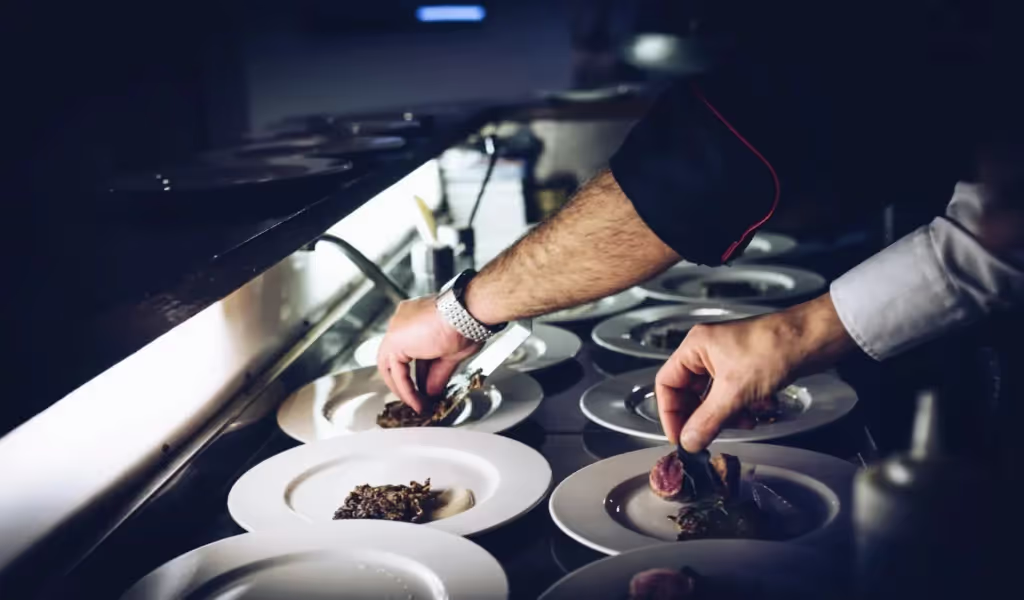
4. Conclusion
In today's world where sustainability and efficiency are more crucial than ever, tackling the challenge of food waste in restaurants is of paramount importance. The magnitude of food wastage, with one-third of globally produced food being discarded, signifies both an environmental concern and a critical business issue for the hospitality industry. Through this article, we've shed light on the pressing problem of food wastage and emphasized its considerable financial implications.
Moreover, we delved into actionable strategies that, when implemented, can significantly reduce food waste. By being cognizant of the causes of wastage, restaurants can transform their operations to be more sustainable and economically sound. Software solutions, like Supy, play a pivotal role in this journey, offering a holistic approach to monitor, manage, and mitigate food wastage. With tools that provide real-time insights, restaurants are empowered to make informed decisions, ultimately enhancing their profitability and fostering a culture of sustainability. In conclusion, food waste is not just about discarded food; it's about resources, money, and the future of our planet. By addressing wastage in restaurants, we not only safeguard our businesses but also contribute to a more sustainable world.
5. About Supy
Managing inventory across your hospitality business presents a unique set of challenges that require precise and efficient solutions. Supy stands as an instrumental partner, designed to address these complexities and significantly optimize your bottom line.
Through Supy's advanced restaurant inventory management software, we offer the capability to centralize and streamline inventory processes. By integrating real-time stock levels with sales data from your POS (point of sales), our system facilitates informed ordering decisions, ensuring optimal food levels across all sites and minimizing potential wastage and spoilage.
Furthermore, with Supy's recipe management and associated costing tools, we provide a platform for accurate ingredient tracking. This is essential not only for guaranteeing efficient use of resources but also for achieving substantial reductions in food costs across the entirety of hospitality business.
Supy's comprehensive tools allow for detailed documentation of all food wastage incidents, enabling operators to identify patterns and implement corrective measures. For a deeper insight into the full suite of solutions Supy offers, get in touch now and schedule a demo. Together, we can elevate the efficiency and profitability of your restaurant operations. Interested ? Book a demo.
FAQ
Why is reducing food waste important for restaurants?
Reducing food waste helps lower costs, improves sustainability, and enhances operational efficiency. It also appeals to environmentally conscious customers.
(Discover 10 Ways to Reduce Food Costs for additional strategies.)
How can inventory management reduce food waste?
Effective inventory management allows you to track stock levels, minimize over-purchasing, and use ingredients before they spoil.
(Explore more on Inventory Management.)
What role does menu engineering play in reducing food waste?
Menu engineering helps identify popular dishes and adjust offerings to reduce waste from low-demand items.
(Learn how to create a profitable menu with Menu Engineering.)
Why should restaurants donate surplus food?
Donating surplus food supports local communities, reduces waste, and promotes a positive brand image.
A food waste audit tracks and identifies waste sources to develop targeted reduction strategies.
How can portion control help reduce waste?
Controlling portions prevents over-serving and ensures customers receive just the right amount, reducing leftovers.
Why is staff training crucial for minimizing food waste?
Educating staff on best practices and waste prevention techniques promotes a culture of sustainability in the kitchen.
(See more in our Operations Management Guide.)
How does tracking food expiration dates help reduce waste?
Monitoring expiration dates helps restaurants use ingredients in the right order, preventing spoilage.
What are some tools for reducing food waste in restaurants?
Digital inventory tools, automated reordering, and waste tracking apps can greatly reduce waste.
How can a central kitchen reduce waste across multiple locations?
A central kitchen enables bulk processing and distribution, reducing waste through efficient batch production.
(Read more on Central Kitchen Management.)
What impact does overordering have on food waste?
Overordering often leads to spoilage, as excess stock may not be used in time.
Why is proper storage essential for food waste reduction?
- Proper storage prolongs the shelf life of ingredients, reducing spoilage and waste.
How does tracking par levels contribute to food waste reduction?
Maintaining optimal stock levels (par levels) minimizes overordering and reduces waste.
(Find out more in Par Level Management.)
What’s the benefit of incorporating seasonal ingredients to reduce waste?
Seasonal ingredients are fresher, last longer, and often require less storage time, minimizing waste.
How can forecasting help reduce food waste?
Accurate sales forecasting aligns inventory with demand, preventing overstocking.
What is the role of data analytics in food waste management?
Data analytics provides insights into waste patterns, enabling better inventory control and purchasing decisions.
Can using imperfect produce reduce waste?
Yes, using imperfect or “ugly” produce reduces waste from food that might otherwise be discarded.
What are some popular food waste tracking software?
Platforms like Supy track inventory, manage ordering, and prevent waste by offering real-time stock monitoring.
How do customer feedback and surveys help manage food waste?
Customer insights allow restaurants to adjust portions and menu items based on demand.
How does food waste reduction impact a restaurant’s bottom line?
Reducing waste directly lowers food costs, increasing profitability and sustainability.





